Back to blog
How to Easily Create a Logo for Your New Company? [Actionable Guide]
Learn how to create a professional logo for your new company with easy-to-use tools, design tips, and best practices to make a lasting impression.

Mar 18 2025
![How to Easily Create a Logo for Your New Company? [Actionable Guide]](https://codesi.ai/admin/static/Cover1_496bf6e884.webp)
Did you know that 75% of consumers recognize the brand by its logo?
It’s interesting to think that something so small can play such an important role in raising brand awareness.
But creating a logo is more than just a nice design.
The process comprises multiple elements to make a logo a true and effective representative of your brand.
Eager to find out how to create a logo for your company easily and with the best impact?
Dive in to explore!
5 Key Benefits of Creating a Logo for Your Company
Besides raising brand awareness and enhancing brand recognition, high-quality logo serves multiple purposes:
- Having a logo conveys professionalism and legitimacy. Companies without logos may appear less established, leading potential customers to question their credibility.
- Your logo can communicate the essence of your brand, including its values and personality.
- A logo provides a consistent visual identity that you can apply across various marketing materials, including websites, social media, packaging, and ads.
- An eye-catching logo can attract potential customers' attention and encourage them to engage with your brand.
Check some interesting stats on why creating a high-quality logo matters so much.
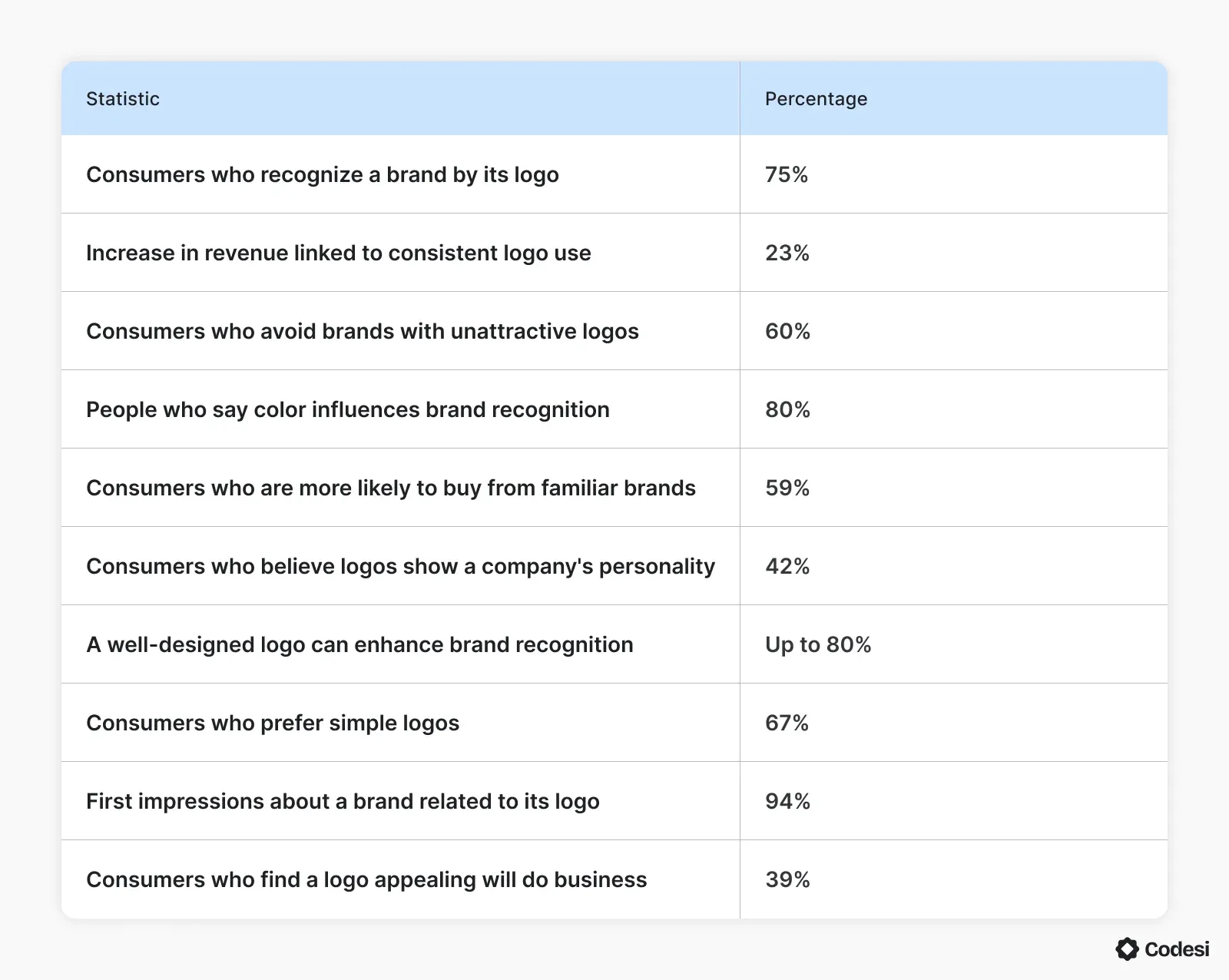
What Makes a Good Logo?
Before we show you all the steps, below, you’ll find the 5 key aspects you should consider before you start working on your logo.
They act as a guideline to help you create an effective logo.
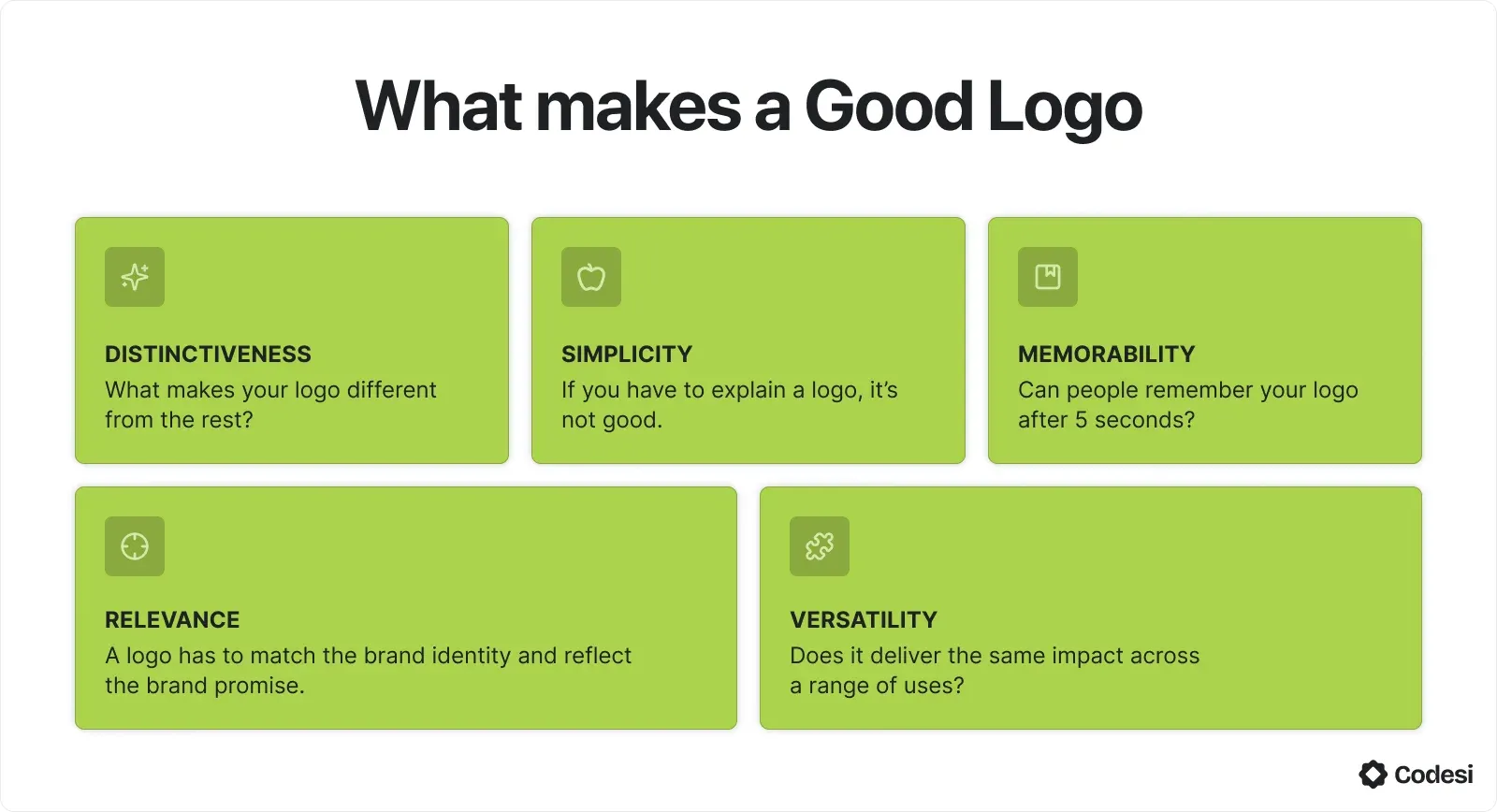
How to Create a Logo for Your Company in 6 Easy Steps?
Step 1: Define Your Brand Identity
Defining your brand identity is a crucial step when creating a logo that truly represents your business and resonates with your target audience.
For starters, you’ll need to come up with your company name unless you already have one.
Bear in mind that your company name is not just a label — it’s the first impression many potential customers will have of your business.
Thus, it should be:
- memorable,
- easy to pronounce,
- web-friendly so that it can work well in digital formats, and
- reflective of the essence of what your business does.
You should also consider how the name will look in a logo or marketing materials.
The next step is to think about the message or values you wish your brand to convey.
- What do you want your customers to feel or think when they see your logo?
- Are you aiming for a sense of professionalism and reliability, or do you want to evoke creativity and innovation?
This message should align with your target audience's interests and expectations, as it will shape how they perceive your brand.
For example, if your business values environmental consciousness, you may opt for green color palettes and earthy design elements.
On the other hand, if you run a tech company, you might choose sleek, modern typography to represent innovation.
💡 How to Come Up With a Name for Your Business?
Here are some suggestions to get your creative juices flowing.
- Combine Words — Merge key concepts or values to create a unique name that reflects your brand's identity.
- Leverage Puns and Wordplay — Use clever wordplay or puns to create a fun and engaging name, particularly suitable for industries like food or entertainment.
- Business Name Generators — Leverage online tools that generate name ideas based on the keywords you provide.
- Thesaurus Exploration — Explore synonyms and related words using a thesaurus to find unique variations that capture your brand's essence.
- Alternative Spellings — Play with the spelling of common words to create a distinctive name, such as "Lyft.”
- Alliteration — Create catchy names by using alliteration, combining similar sounds to make the name more memorable (e.g., "Creative Cats" or "Bouncing Berries").
- Color + Animal/Plant Combo — Combine a color with an animal or plant name for a unique twist (e.g., "Blue Elephant" or "Green Fern").
Step 2: Brainstorm and Find Inspiration
If you are unsure how to start creating your logo regarding design, color, fonts, and other elements, you can check your competitors' logos to identify what makes them unique and how you can differentiate yours.
Also, you should stay on top of industry trends to see what’s popular, but at the same time, avoid making a logo that looks like a dime a dozen.
Besides checking your competitors and diving into industry trends, you can browse the internet and social media, and check platforms like Pinterest for a dash of inspiration.
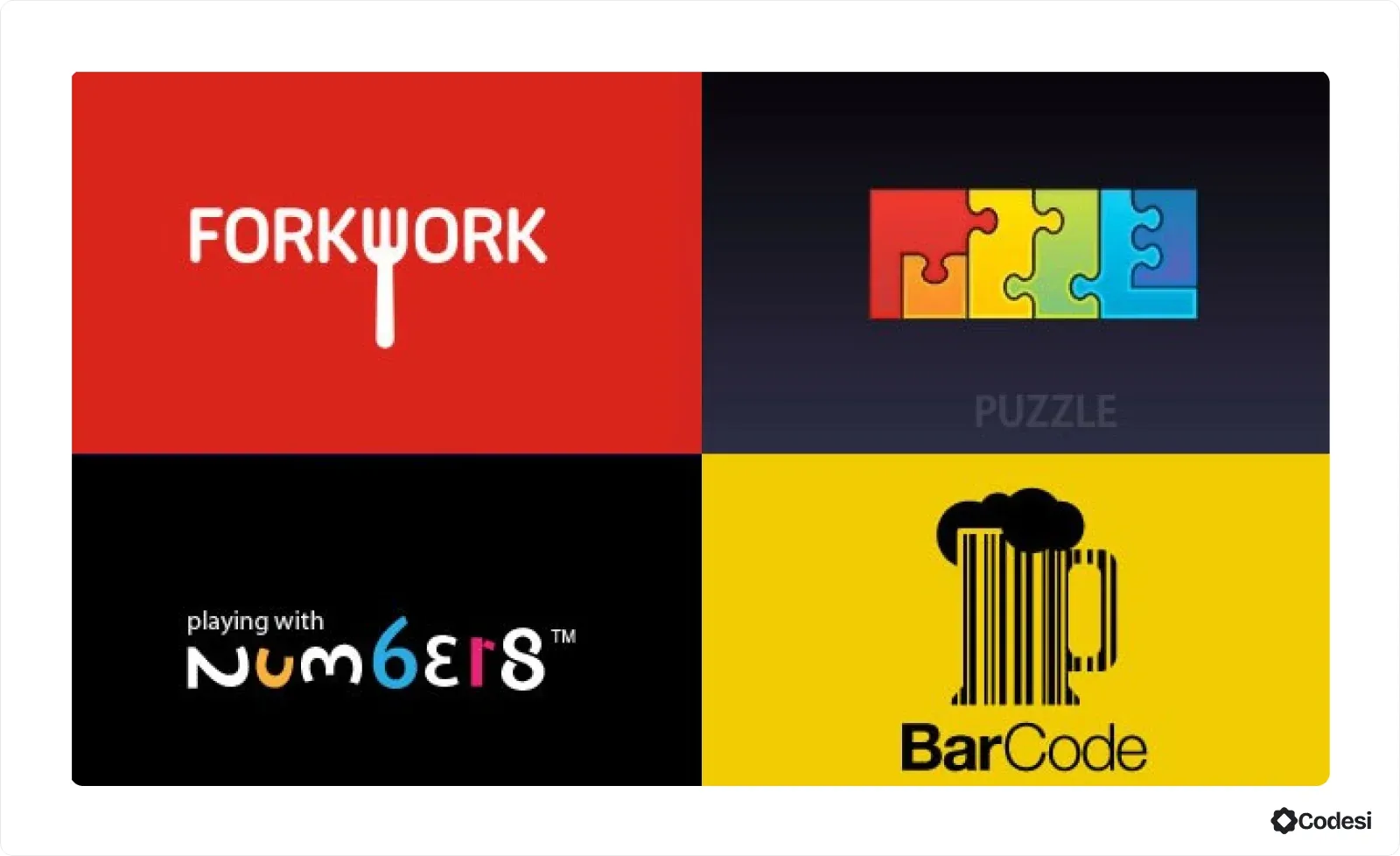
Step 3: Decide on a Logo Type
All the following steps revolve around the very first step you took — defining your brand identity. This notion will shape every aspect of the creation process, from choosing the style and type over colors and designs.
Let’s see the most common logo types:
1. Wordmark Logos — Consist solely of text, often using a custom or distinctive font to represent the brand name.
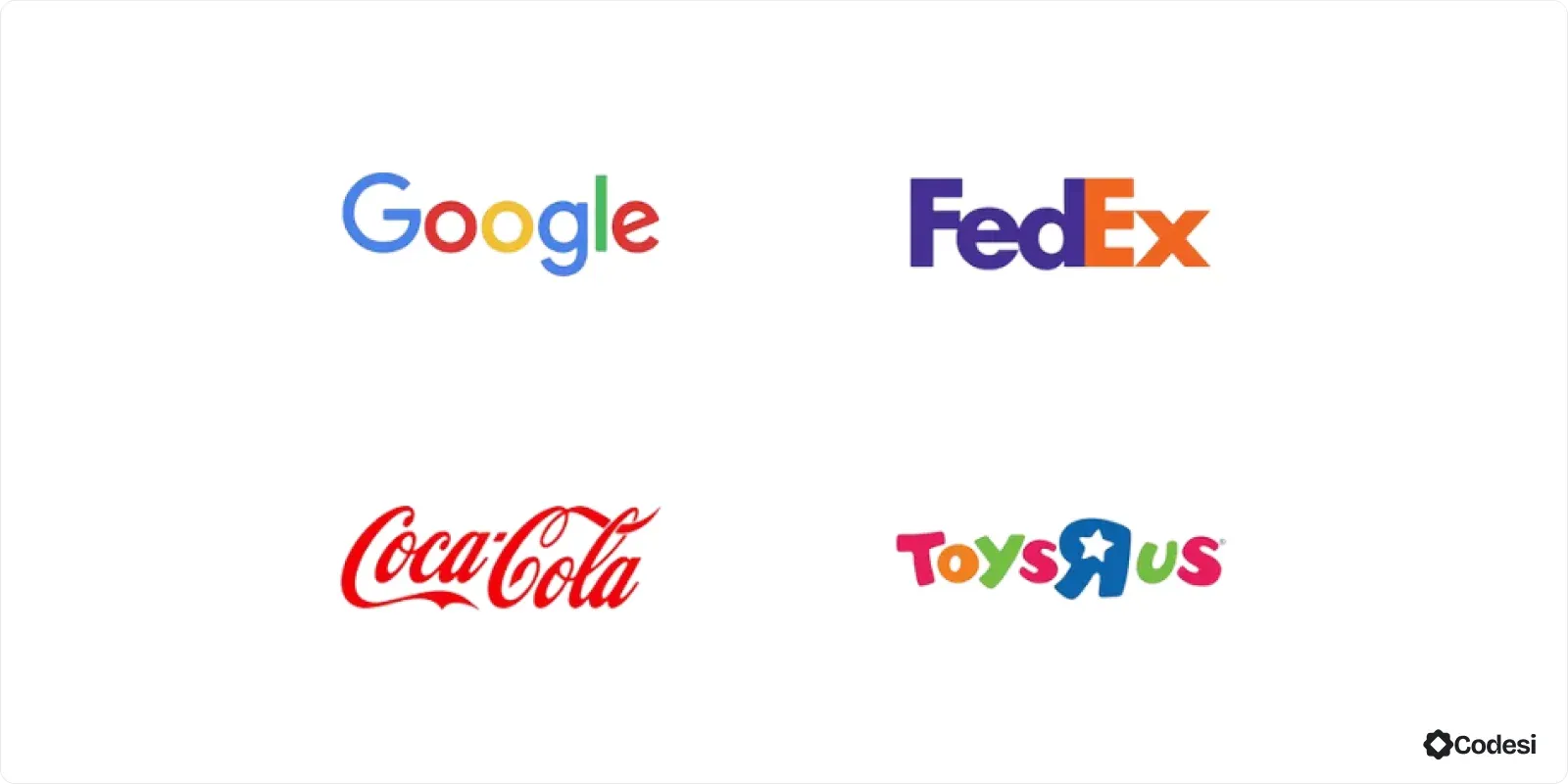
Examples: Coca-Cola, Google, Disney.
Use: Ideal if your brand has a memorable name or you aim to establish the name as a key part of the brand identity.
2. Letterform — Single-letter logos that represent the brand, often used for app icons or social media profiles.

Examples: Facebook and McDonald’s.
Use: Suitable for well-known brands or those seeking minimalism.
3. Lettermark/Monogram — Logos made from the initials of a company name, often used by brands with long names.
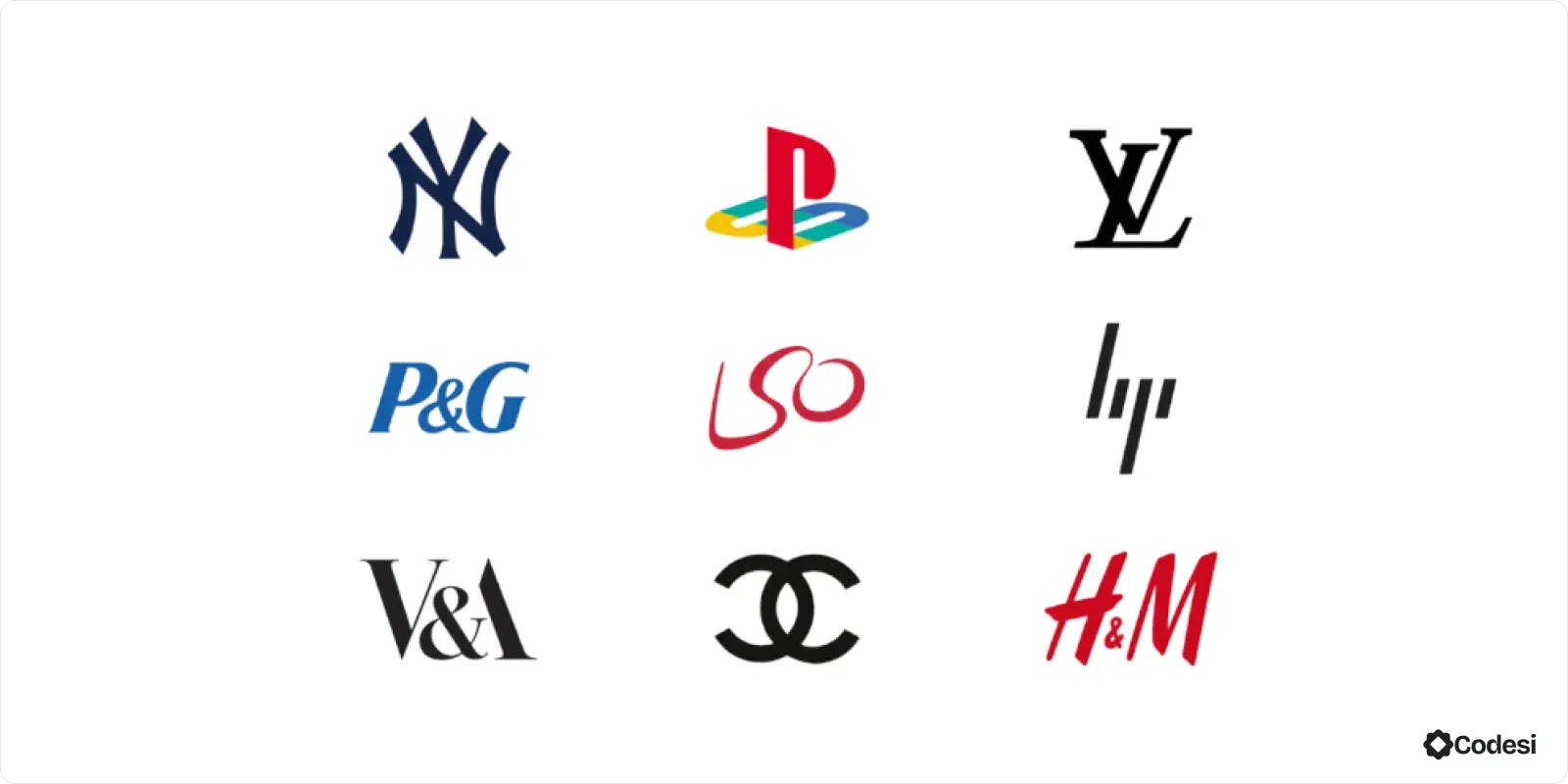
Examples: IBM, HBO, NASA.
Use: Effective in industries where abbreviations are common or for brands with lengthy names.
4. Abstract — Non-literal symbols that represent a brand conceptually rather than literally.
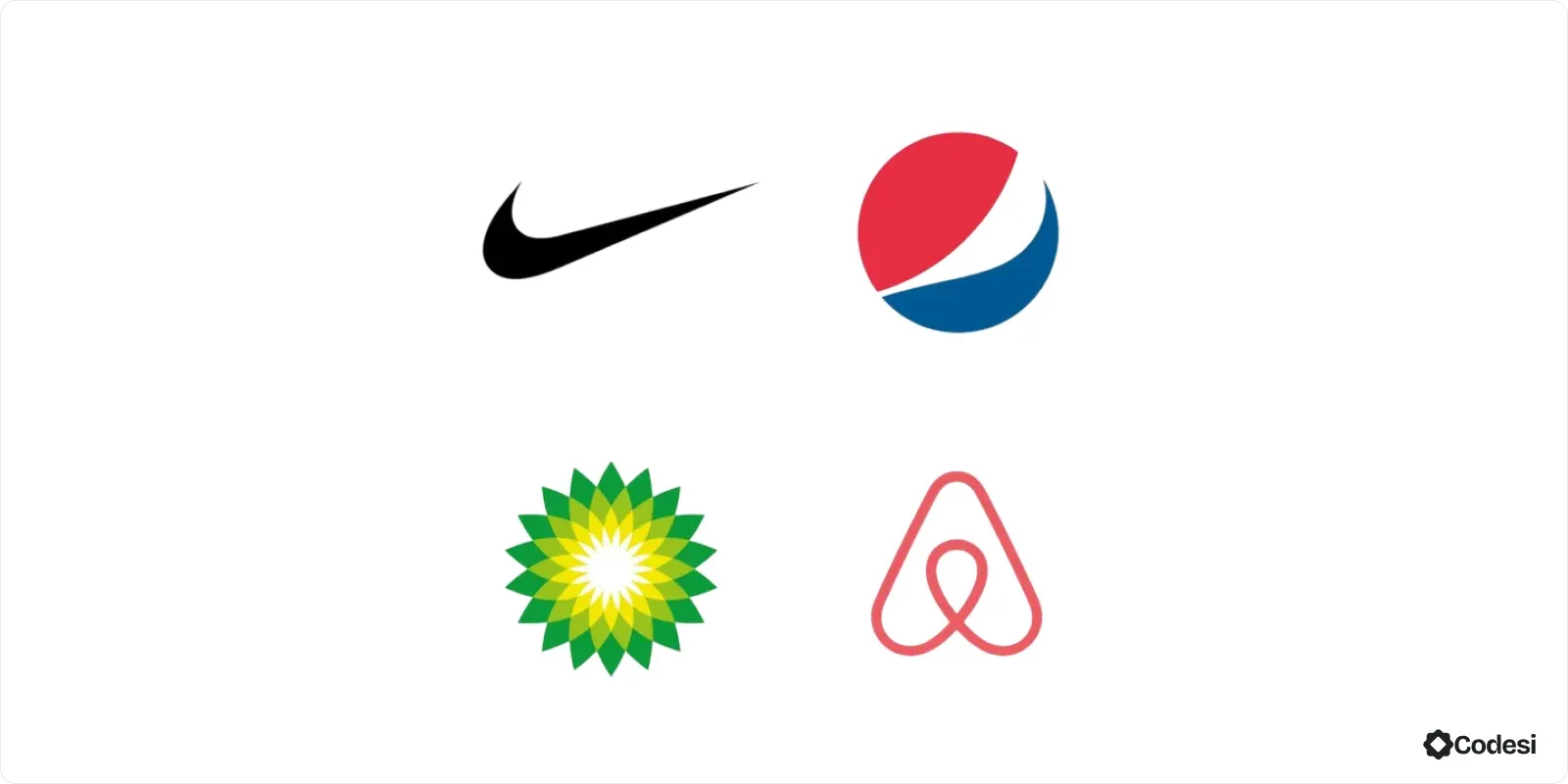
Examples: Nike Swoosh, Adidas stripes.
Use: Great for creating unique visual identities and conveying brand values through symbolism.
5. Emblem — Logos that enclose text within a symbol or icon, often giving a traditional or official feel.
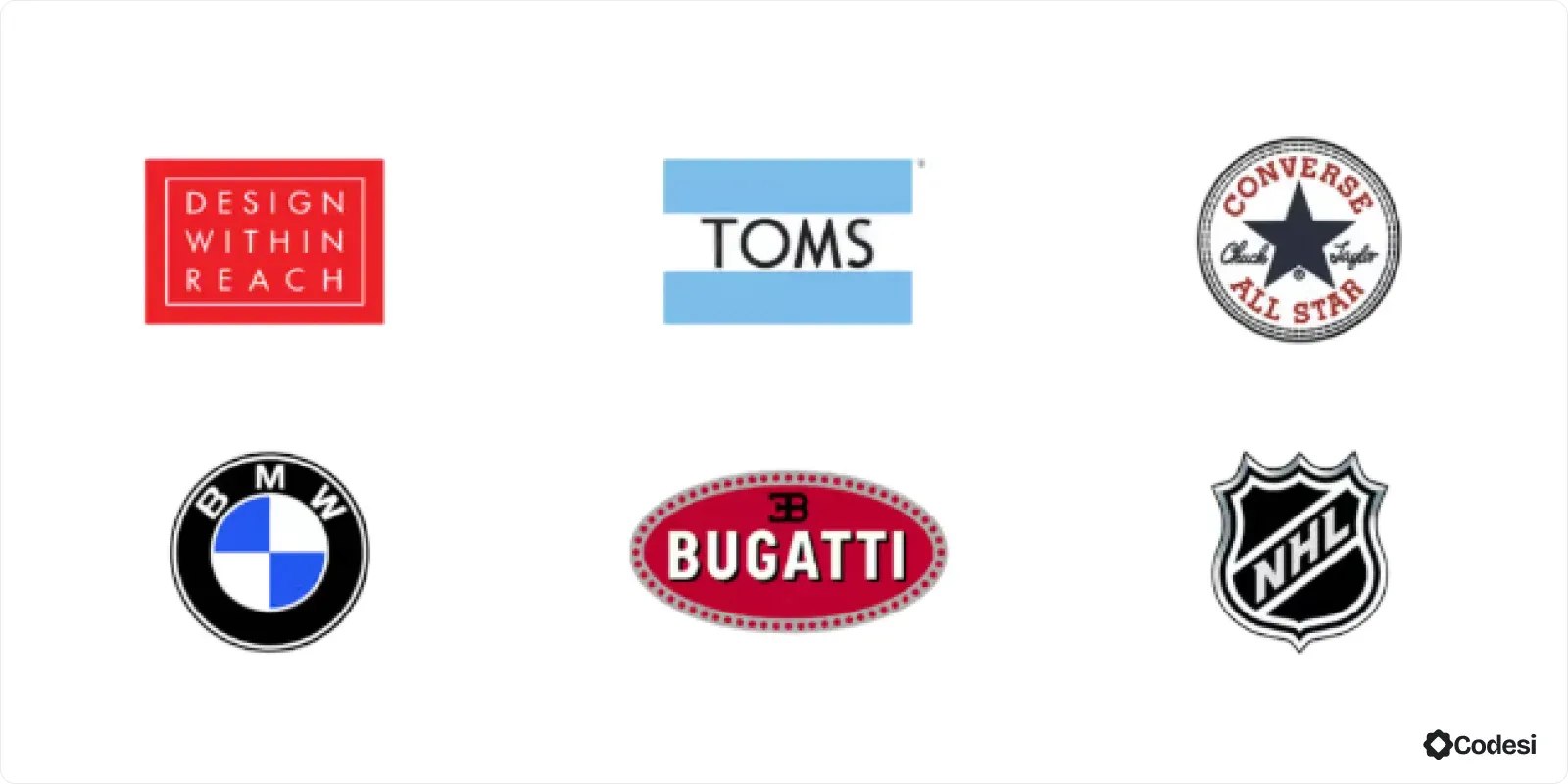
Examples: Harley-Davidson, NFL.
Use: Suitable for brands seeking a classic or prestigious image.
6. Pictorial Mark — Logos that feature a recognizable image or icon without text.
Examples: Apple, Twitter.
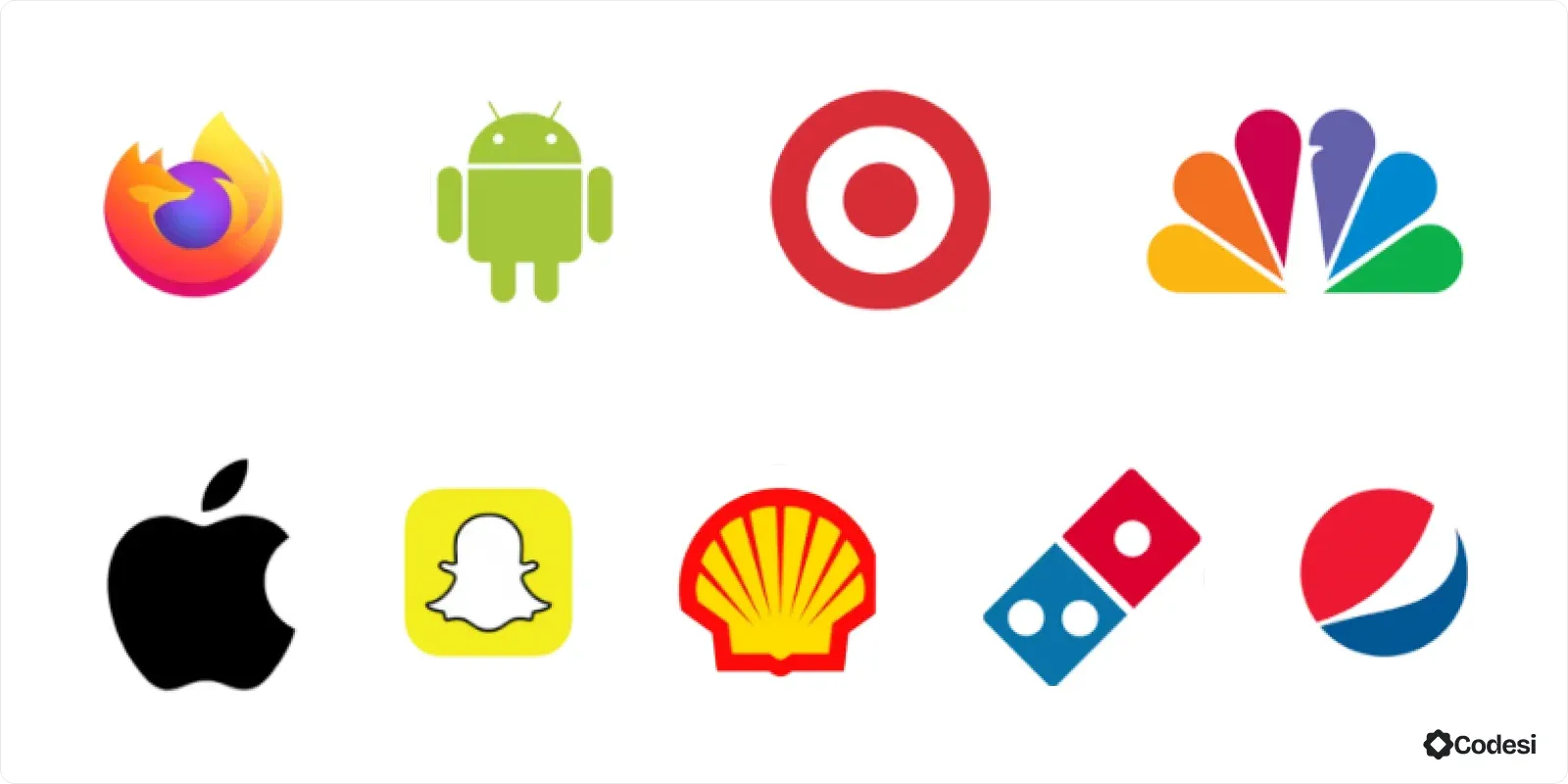
Use: Effective for brands that want a simple, memorable visual identity
7. Mascot — Logos that feature a character or mascot representing the brand.
Examples: KFC’s Colonel Sanders, Tony the Tiger.
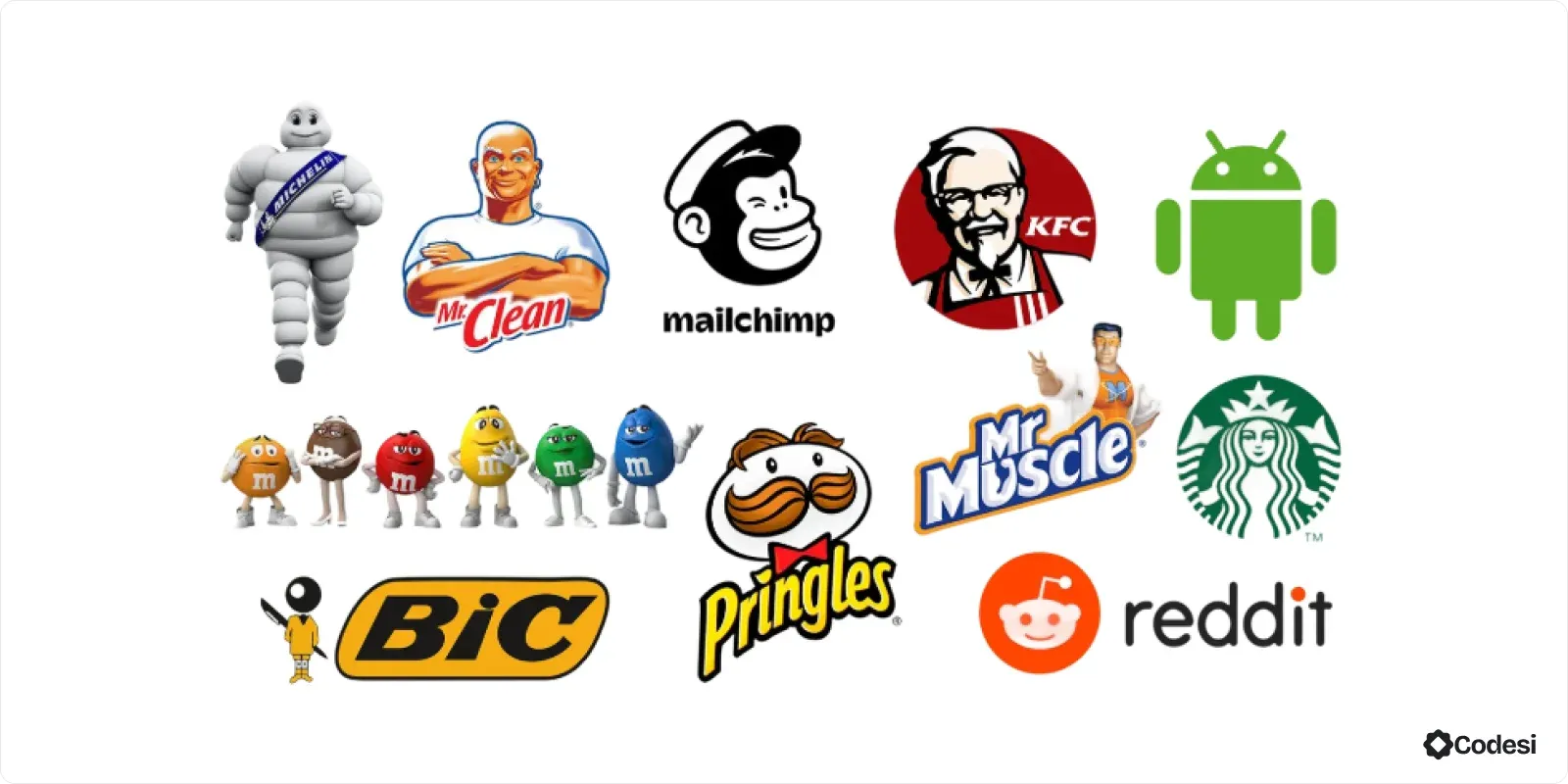
Use: Often used in consumer products to create a friendly, approachable brand image.
8. Combination Mark — Logos that combine symbols with text, offering flexibility in branding.
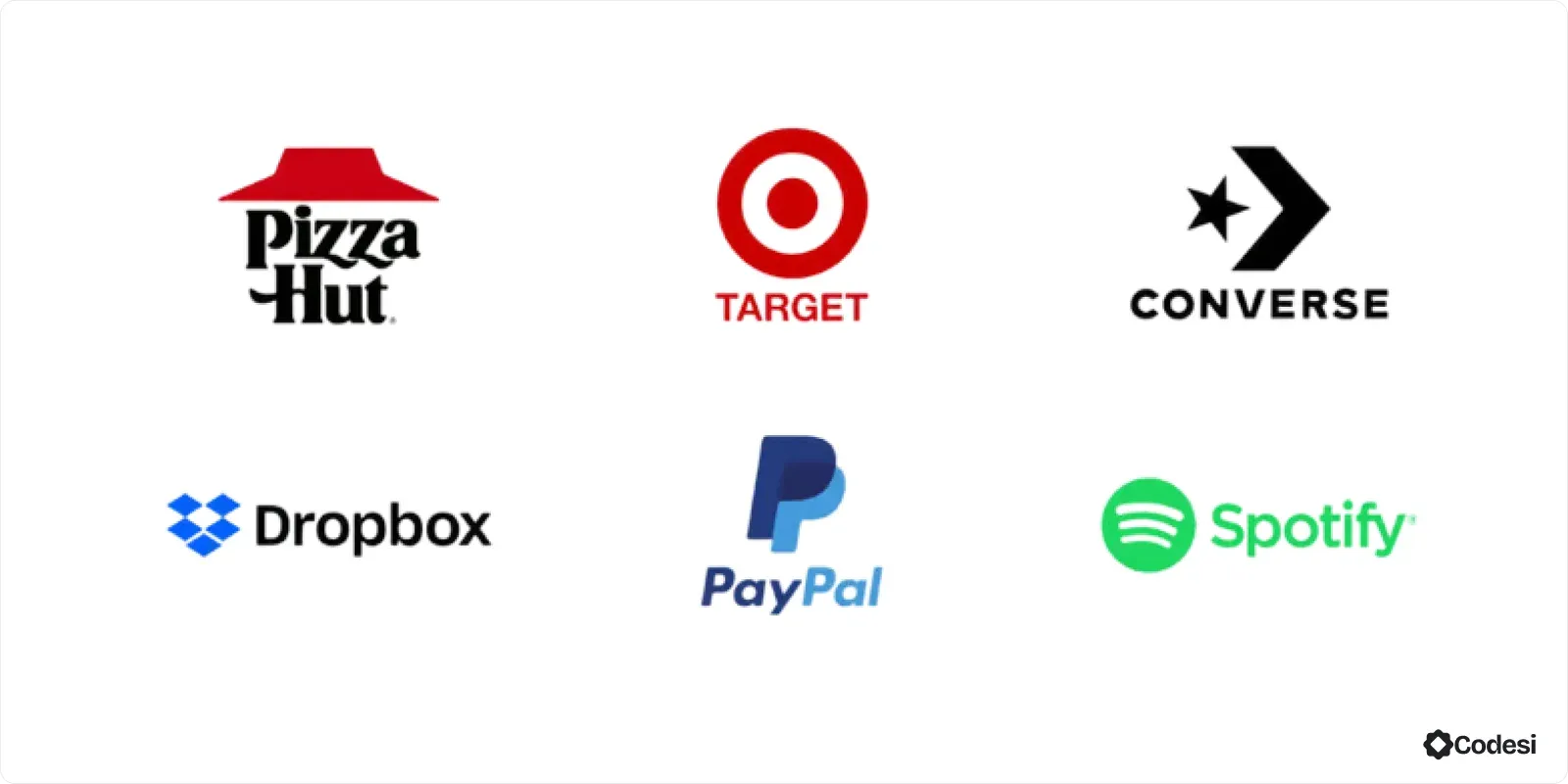
Examples: Burger King, Domino’s Pizza.
Use: Ideal for brands that want both a recognizable symbol and clear brand name visibility.
💡 Fun Fact:
The combination logo is the most popular, with 61% of Fortune 500 companies using it.
Step 4: Pick a Logo Color
Selecting the right color for your logo is a crucial step in establishing your brand identity and effectively communicating your message to your audience.
The color you choose can:
- evoke emotions,
- convey meanings, and
- create an immediate association with your brand.
Color psychology plays a pivotal role in branding. Different colors can elicit various feelings and reactions in people.
For example:
- Red is often associated with passion, energy, and excitement and can grab attention. It is frequently used in industries that want to evoke strong emotions, such as food, sports and entertainment.
- Blue symbolizes trust, reliability, and calmness, making it a popular choice for corporate brands, technology companies, and finance sectors, as it instills a sense of security.
- Green represents nature, growth, and health. It is commonly used by brands in the wellness and environmental sectors, promoting sustainability and freshness.

- Yellow exudes happiness, warmth, optimism, and clarity. Thus, it can attract attention effectively, but you should use it cautiously, as it can also cause visual strain.
- Purple is often associated with luxury, creativity, and wisdom and can convey a sense of premium quality and uniqueness. As a result, it is popular among brands that cater to an upscale market.
- Black signifies sophistication, elegance, and power. It is versatile and you can find it in both luxury brands and modern tech companies.
- Orange is engaging and vibrant, and can convey enthusiasm and creativity, making it great for brands looking to promote a fun and energetic vibe.
Extra Tips to Choose The Right Color for Your Logo
Pair colors opposite each other on the color wheel, for example, blue and orange, for a striking effect.
Conversely, use adjacent colors on the color wheel, like blue, green, and yellow, for a harmonious look.
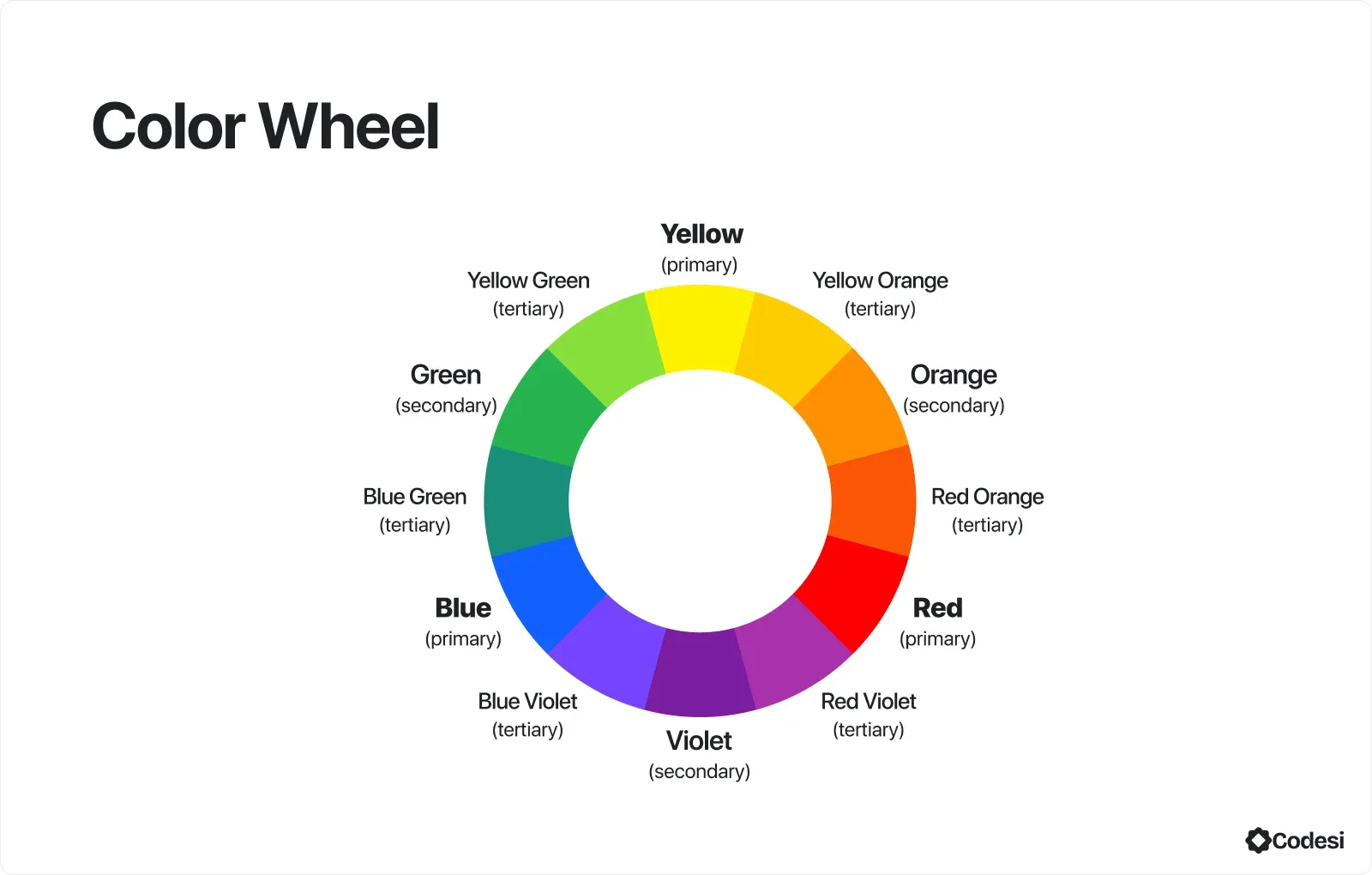
Most companies use one to three colors, so you may want to stick to that pattern in order not to end up with too colorful or overwhelming color combinations.
Once you've selected a color, it’s crucial to maintain consistency across all branding materials, websites, packaging, and marketing.
Furthermore, if you use both digital and print materials, make sure your color looks consistent across both formats:
Choose the RGB model for digital displays and the CMYK model for print materials.
Before finalizing your logo color, it’s wise to test different color options and gather feedback from a sample of your target audience or peers.
A/B testing can be a valuable strategy, allowing you to compare how different color variations engage your audience.
💡 ProTip:
Besides enabling you to quickly create fully tailored logos, websites, and images based on your unique input, Codesi allows you to test features to see what currently attracts users the most and least.
Step 5: Choose The Font for Your Logo
If you opt for a logo that displays text, choosing the right font is a crucial step.
Again, your target audience, brand values and overall message and value preposition will be determining factors.
Here’s a list of the top font types:
- Sans Serif Fonts are known for their clean, straightforward appearance. They are great for modern and minimalistic designs, focusing on simplicity. Popular examples are Netflix and Facebook.
- Serif Fonts convey tradition, reliability, and classic elegance. They often work well for established brands. Some of the examples include Rolex and Prada.
- Script Fonts mimic handwriting, adding an element of personality and warmth. However, they can be harder to read in smaller sizes and may not work well for all types of brands.
- Display Fonts are unique, eye-catching fonts, popular for headlines and logos.
Regarding capitalization style, All Caps is the most popular, followed by the title case style. All Lowercase style is the least popular.
It is not directly related to fonts, but asymmetrical logo shapes beat geometrical and abstract ones.
Step 6: Create a Logo for Your Company
With all the research, competitor and trend analysis, and brainstorming about the logo type, colors and fonts, it’s time to create a logo.
There are 2 ways you can do that, one more time-consuming and not always as intuitive as the other.
6.1. Leverage Logo Makers
Most logo generators offer a drag-and-drop interface that allows you to easily move the elements and change the text size, color palette, and icon placement.
- In addition, you can adjust the size, spacing, and alignment of elements and experiment with different layouts and compositions.
- You can also use the ready-made templates, or you can start from scratch if you have more advanced design skills. This way, you’ll have more customization options.
- Also, most platforms offer vector files (SVG) along with PNGs and JPEGs so you can save your logo in multiple formats.
- Finally, export high-resolution files suitable for different formats, such as web or print.
However, although some logo generators are beginner-friendly, some require more advanced design skills if you really want to create a more custom and original logo.
Furthermore, relying on generic templates, as facilitating as it is, can result in a logo that doesn’t stand out or isn’t unique.
And by now, you know that if a logo has to convey one thing, it is to be unique. This lack of originality is one of the biggest drawbacks of traditional logo makers.
6.2. Leverage AI Logo Generators
AI Logo generators, on the other hand, give you more creative freedom to tailor the logo according to your parameters, target audience, and needs.
They come in many shapes and sizes, but they all use your text input to generate a high-quality logo.
Usually, you need to input your business name and add keywords.
Once your logo is generated, you can customize it further regarding colors, style, alignment, etc.
In addition, AI logo generators can produce various logo options in minutes, significantly reducing the time required for logo creation.
This speed allows you to experiment with your designs more easily and iterate quicker based on user feedback.
How to Create a Logo for Your Company with Codesi?
Codesi is an intuitive AI logo generator that allows you to generate a logo pack in between 1 and 3 minutes, with zero coding skills required.
What does the process look like?
🔥 You need to:
- provide the brand name and descriptor for the logo,
- choose the color of the logo, and
- choose the font of the text.
Based on your prompt, our text-to-logo AI tool will generate a pack of 4 logos as an output.
What’s more, each logo has 3 variations:
- with text and descriptor on the right side,
- with text and descriptor on the bottom, and
- without text and descriptor, enabling you to choose the one that best suits your needs.
🔥 According to our use cases, clients who want to create a logo also wish to complement the logo with a matching website.
With Codesi, they can do both within a single platform.
🔥 Based on the same input principle, our AI tool lets you generate customizable images and fully functional one-page websites and landing pages in under 10 minutes with Google Analytics and Yandex integrations.
There’s much more than meets the eye regarding Codesi.
Enticed to get practical?
Start with Codesi for free to create a logo that not only captures the essence of your brand but also engages your audience effectively.
Create your website with AI today
Codesi is a platform where you can make a website in 3 minutes.
No coding, no designers, no hassle - just AI.
